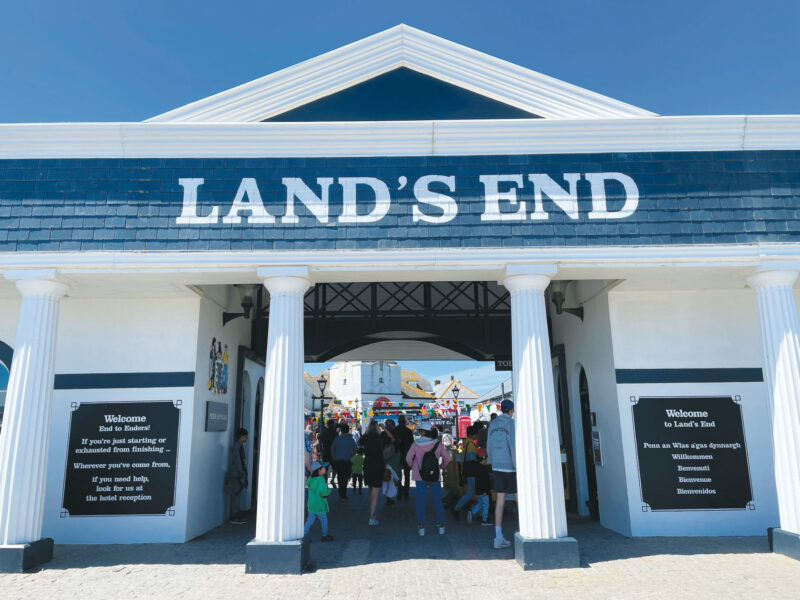When you arrive at Land’s End, there’s no mistaking where you are, and yet you cannot see it. What you can see—at this southwesternmost tip of England, this cliff-edge of Britannia, where the Cornwall peninsula claws into the Celtic Sea—is a parking lot.
Then you can see the words land’s end emblazoned on an enormous Doric-columned entrance, the width of a four-lane highway, beside which the open-topped Land’s End Coaster deposits busloads of tourists. Then you can see Land’s End doughnuts, and Land’s End ice cream, and the boots of a man who walked naked from Land’s End to the north tip of Great Britain. You can see Land’s End teddy bears, and Land’s End stuffed octopuses, and Land’s End pillows shaped like giant Cornish pasties, the famous thick-crusted savory tarts once meant for miners to eat underground and now among the region’s biggest exports.
You have reached your article limit
Sign up for a digital subscription and continue reading all new issues, plus our entire archives, for just $1.50/month.
Already a subscriber? Sign in





